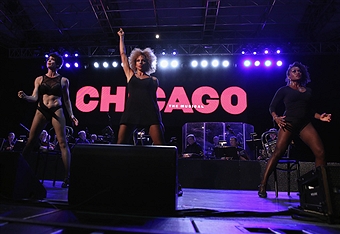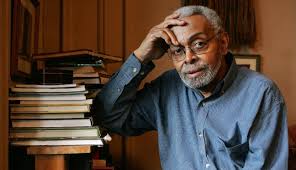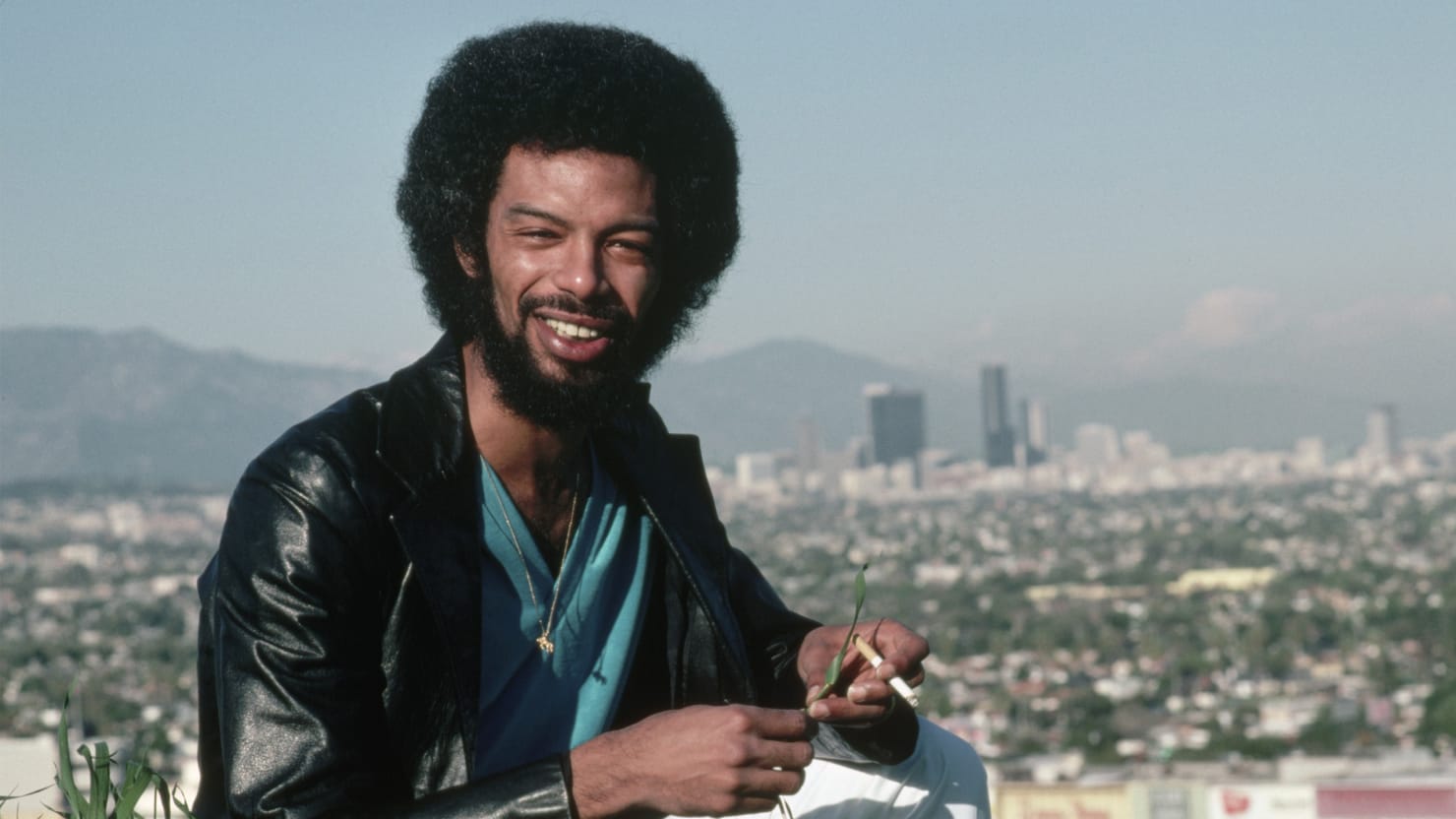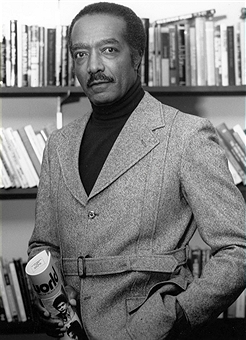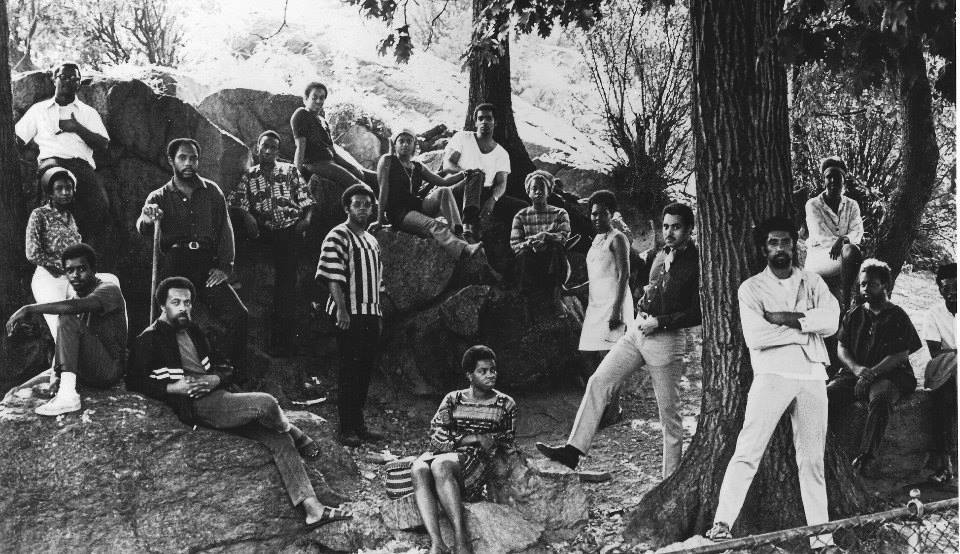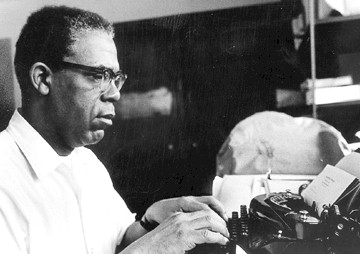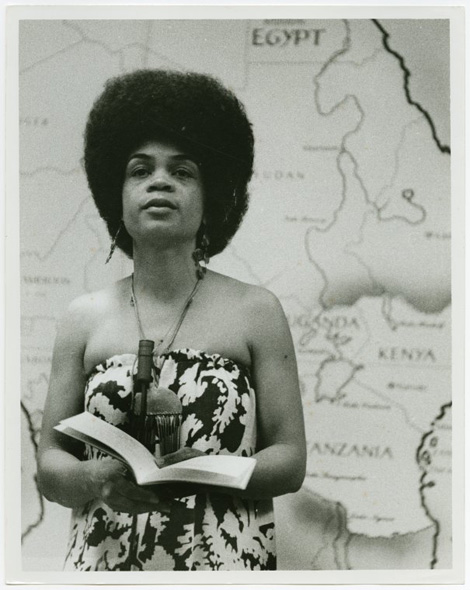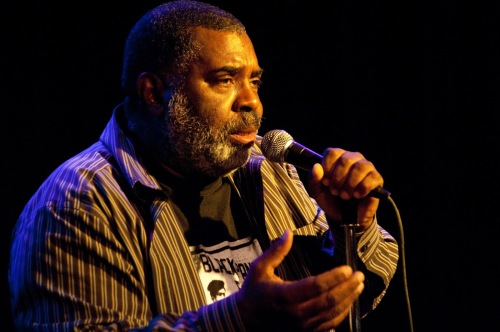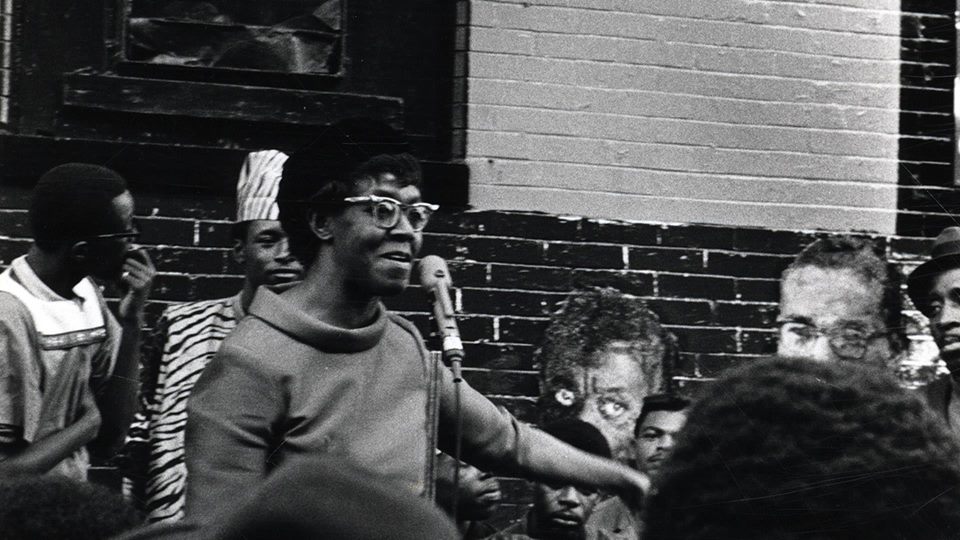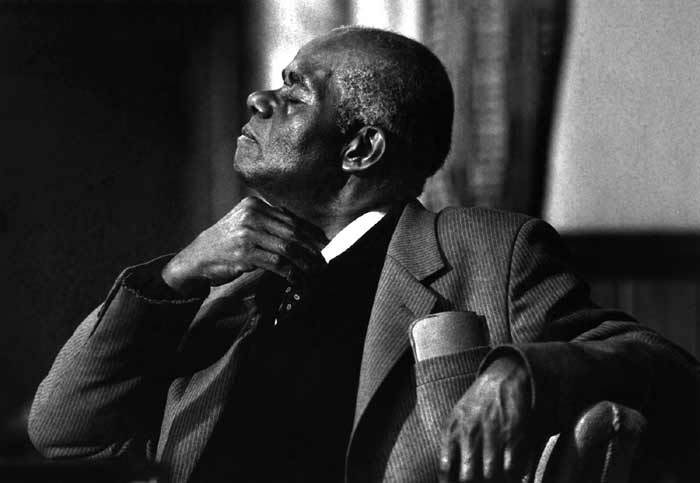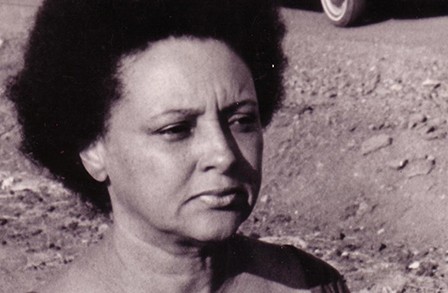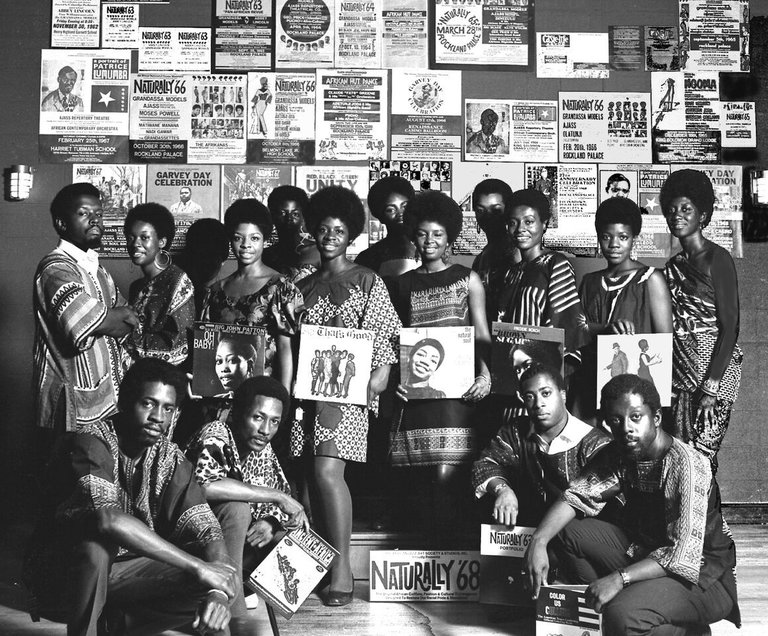The Black Arts Movement: Part I: History and Context

THE WALL OF RESPECT: The Wall of Respect was a mural first painted in 1967 by the Visual Arts Workshop of the Organization of Black American Culture (OBAC). The mural represented the contributions of fourteen designers, photographers, painters, and others, notably Chicago muralist William Walker. The work comprised a montage of portraits of heroes and heroines of African American history painted on the side of a building at the corner of Chicago's 43rd Street and Langley Avenue, an area called the Black Belt. Notable images included Martin Luther King, Jr., Nat Turner, Elijah Muhammad, Malcolm X, Muhammad Ali, Gwendolyn Brooks, W.E.B. Dubois, Marcus Garvey, Aretha Franklin, and Harriet Tubman.
The Black Arts Movement
Part II: Theory and Practice
Kalamu ya Salaam
Theory and Practice
The two hallmarks of Black Arts activity were the development of Black theater groups and Black poetry performances and journals, and both had close ties to community organizations and issues. Black theaters served as the focus of poetry, dance, and music performances in addition to formal and ritual drama.
Black theaters were also venues for community meetings, lectures, study groups, and film screenings. The summer of 1968 issue of Drama Review, a special on Black theater edited by Ed Bullins, literally became a Black Arts textbook that featured essays and plays by most of the major movers: Larry Neal, Ben Caldwell, LeRoi Jones, Jimmy Garrett, John O'Neal, Sonia Sanchez, Marvin X, Ron Milner, Woodie King, Jr., Bill Gunn, Ed Bullins, and Adam David Miller.
Black Arts theater proudly emphasized its activist roots and orientations in distinct, and often antagonistic, contradiction to traditional theaters, both Black and white, which were either commercial or strictly artistic in focus.
By 1970 Black Arts theaters and cultural centers were active throughout America. The New Lafayette Theatre (Bob Macbeth, executive director, and Ed Bullins, writer in residence) and Barbara Ann Teer's National Black Theatre led the way in New York, Baraka's Spirit House Movers held forth in Newark and traveled up and down the East Coast.
The Organization of Black American Culture (OBAC) and Val Grey Ward's Kuumba Theatre Company were leading forces in Chicago, from where emerged a host of writers, artists, and musicians including the OBAC visual artist collective whose "Wall of Respect" inspired the national community-based public murals movement and led to the formation of Afri-Cobra (the African Commune of Bad, Revolutionary Artists).
There was David Rambeau's Concept East and Ron Milner and Woodie King’s Black Arts Midwest, both based in Detroit. Ron Milner became the Black Arts movement's most enduring playwright and Woodie King became its leading theater impresario when he moved to New York City.
In Los Angeles there was the Ebony Showcase, Inner City Repertory Company, and the Performing Arts Society of Los Angeles (PALSA) led by Vantile Whitfield.
In San Francisco was the aforementioned Black Arts West. BLKARTSOUTH (led by Tom Dent and Kalamu ya Salaam) was an outgrowth of the Free Southern Theatre in New Orleans and was instrumental in encouraging Black theater development across the south from the Theatre of Afro Arts in Miami, Florida, to Sudan Arts Southwest in Houston, Texas, through an organization called the Southern Black Cultural Alliance.
In addition to formal Black theater repertory companies in numerous other cities, there were literally hundreds of Black Arts community and campus theater groups.
A major reason for the widespread dissemination and adoption of Black Arts was the development of nationally distributed magazines that printed manifestos and critiques in addition to offering publishing opportunities for a proliferation of young writers.
Whether establishment or independent, Black or white, most literary publications rejected Black Arts writers. The movement's first literary expressions in the early 1960s came through two New York-based, nationally distributed magazines, Freedomways and Liberator.
Freedomways, "a journal of the Freedom Movement," backed by leftists, was receptive to young Black writers.
The more important magazine was Dan Watts's Liberator, which openly aligned itself with both domestic and international revolutionary movements. Many of the early writings of critical Black Arts voices are found in Liberator. Neither of these were primarily literary journals.
The first major Black Arts literary publication was the California-based Black Dialogue (1964), edited by Arthur A. Sheridan, Abdul Karim, Edward Spriggs, Aubrey Labrie, and Marvin Jackmon (Marvin X).
Black Dialogue was paralleled by Soulbook (1964), edited by Mamadou Lumumba (Kenn Freeman) and Bobb Hamilton. Oakland-based Soulbook was mainly political but included poetry in a section ironically titled "Reject Notes."
Dingane Joe Goncalves became Black Dialogue's poetry editor and, as more and more poetry poured in, he conceived of starting the Journal of Black Poetry. Founded in San Francisco, the first issue was a small magazine with mimeographed pages and a lithographed cover.
Up through the summer of 1975, the Journal published nineteen issues and grew to over one hundred pages. Publishing a broad range of more than five hundred poets, its editorial policy was eclectic.
Special issues were given to guest editors who included Ahmed Alhamisi, Don L. Lee (Haki R. Madhubuti), Clarence Major, Larry Neal, Dudley Randall, Ed Spriggs, and Askia Touré. In addition to African Americans, African, Caribbean, Asian, and other international revolutionary poets were presented.
Founded in 1969 by Nathan Hare and Robert Chrisman, the Black Scholar, "the first journal of black studies and research in this country," was theoretically critical. Major African-disasporan and African theorists were represented in its pages. In a 1995 interview Chrisman attributed much of what exists today to the groundwork laid by the Black Arts movement:
If we had not had a Black Arts movement in the sixties we certainly wouldn't have had national Black literary figures like Henry Louis Gates, Jr., Alice Walker, or Toni Morrison because much more so than the Harlem Renaissance, in which Black artists were always on the leash of white patrons and publishing houses, the Black Arts movement did it for itself. What you had was Black people going out nationally, in mass, saving that we are an independent Black people and this is what we produce.
For the publication of Black Arts creative literature, no magazine was more important than the Chicago-based Johnson publication Negro Digest / Black World. Johnson published America's most popular Black magazines, Jet and Ebony. Hoyt Fuller, who became the editor in 1961, was a Black intellectual with near-encyclopedic knowledge of Black literature and seemingly inexhaustible contacts.
Poet and publisher Dudley Randall, founder of Detroit's Broadside Press in 1965. Randall published many leading African-American writers, including: Melvin Tolson, Sonia Sanchez, Audre Lorde, Gwendolyn Brooks, Etheridge Knight, and Margaret Walker.
For the publication of Black Arts creative literature, no magazine was more important than the Chicago-based Johnson publication Negro Digest / Black World. Johnson published America's most popular Black magazines, Jet and Ebony. Hoyt Fuller, who became the editor in 1961, was a Black intellectual with near-encyclopedic knowledge of Black literature and seemingly inexhaustible contacts.
Because Negro Digest, a monthly, ninety-eight-page journal, was a Johnson publication, it was sold on newsstands nationwide. Originally patterned on Reader’s Digest, Negro Digest changed its name to Black World in 1970, indicative of Fuller’s view that the magazine ought to be a voice for Black people everywhere.
The name change also reflected the widespread rejection of "Negro" and the adoption of "Black" as the designation of choice for people of African descent and to indicate identification with both the diaspora and Africa. The legitimation of "Black" and "African" is another enduring legacy of the Black Arts movement.
Negro Digest / Black World published both a high volume and an impressive range of poetry, fiction, criticism, drama, reviews, reportage, and theoretical articles. A consistent highlight was Fuller's perceptive column Perspectives ("Notes on books, writers, artists and the arts") which informed readers of new publications, upcoming cultural events and conferences, and also provided succinct coverage of major literary developments.
Fuller produced annual poetry, drama, and fiction issues, sponsored literary contests, and gave out literary awards. Fuller published a variety of viewpoints but always insisted on editorial excellence and thus made Negro Digest / Black World a first-rate literary publication.
Black Dialogue magazine (Summer, 1970). Contributors included Sonia Sanchez. Nikki Giovanni served on the New York Editorial Board.

"For the publication of Black Arts creative literature, no magazine was more important than the Chicago-based Johnson publication Negro Digest / Black World"

While not a primarilly literary journal, the Liberator provided an outlet for early, critical Black Arts vces.

Cover, Black Revolutionary Theater, Special issue of The Drama Review, Summer 1968

Founded in 1961 by Louis Burnham, Edward Strong, W.E.B. Du Bois and its first general editor Shirley Graham Du Bois, Freedomways was the leading African-American theoretical, political and cultural journal of the 1960s–1980s.
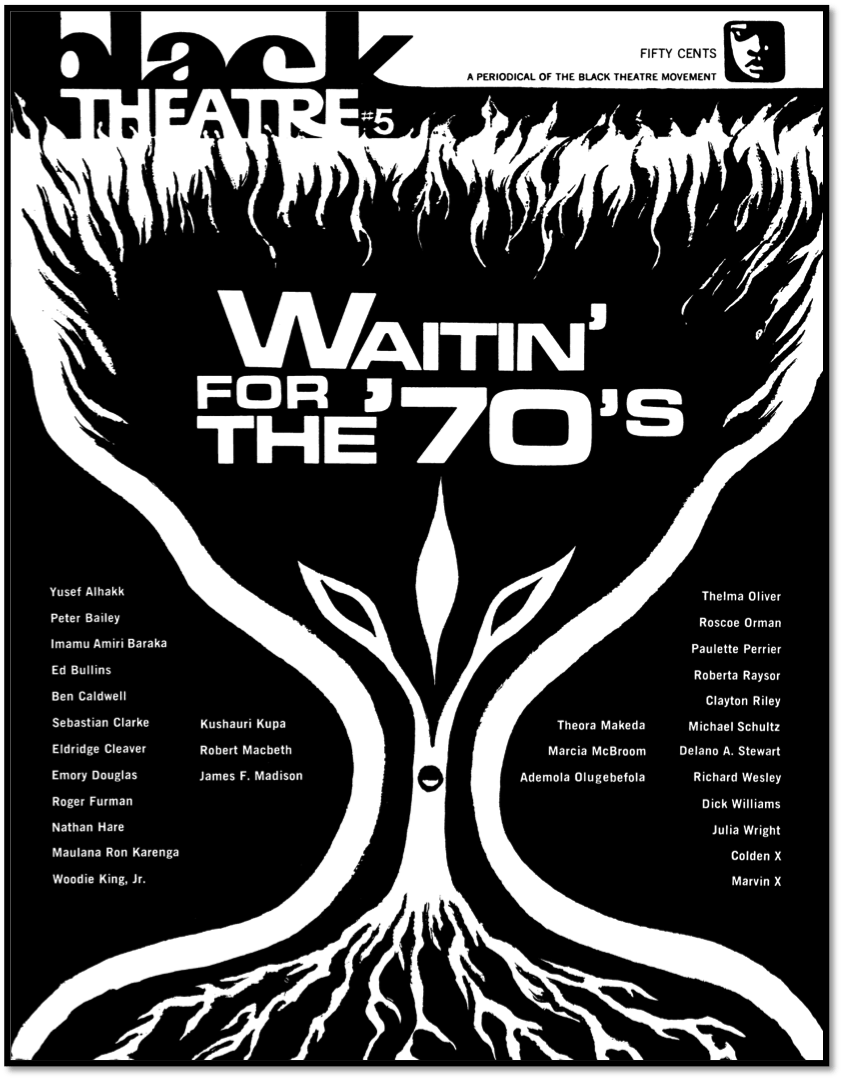
The new Lafayette Theatre (1967-1972) published six editions of the periodical Black Theatre. The journal documents the diversity of ideas and opinions amongst the visionaries who led the Black Arts Movements.

SKU00006
Johnson decided to cease publication of Black World in April 1976: allegedly in response to a threatened withdrawal of advertisement from all of Johnson's publications because of pro-Palestinian/anti-Zionist articles in Black World.
The two major Black Arts presses were poet Dudley Randall's Broadside Press in Detroit and Haki Madhubuti's Third World Press in Chicago.
From a literary standpoint, Broadside Press, which concentrated almost exclusively on poetry, was by far the more important. Founded in 1965, Broadside published more than four hundred poets in more than one hundred books or recordings and was singularly responsible for presenting older Black poets (Gwendolyn Brooks, Sterling A. Brown, and Margaret Walker) to a new audience and introducing emerging poets (Nikki Giovanni, Etheridge Knight, Don L. Lee/Haki Madhubuti, and Sonia Sanchez) who would go on to become major voices for the movement.
In 1976, strapped by economic restrictions and with a severely overworked and overwhelmed three-person staff, Broadside Press went into serious decline. Although it functions mainly on its back catalog, Broadside Press is still alive.
While a number of poets (e.g., Amiri Baraka, Nikki Giovanni, Haki Madhubuti, and Sonia Sanchez), playwrights (e.g., Ed Bullins and Ron Milner), and spoken-word artists (e.g., the Last Poets and Gil Scott-Heron, both of whom were extremely popular and influential although often overlooked by literary critics) are indelibly associated with the Black Arts movement, rather than focusing on their individual work, one gets a much stronger and much more accurate impression of the movement by reading seven anthologies focusing on the 1960s and the 1970s.
Models from the Grandassa Models agency in 1968, part of the “Black Power!” exhibition at the Schomburg Center for Research in Black Culture. Credit Kwame Brathwaite
Black Fire (1968), edited by Baraka and Neal, is a massive collection of essays, poetry, fiction, and drama featuring the first wave of Black Arts writers and thinkers. Because of its impressive breadth, Black Fire stands as a definitive movement anthology.
For Malcolm X, Poems on the Life and the Death of Malcolm X (1969), edited by Dudley Randall and Margaret Taylor Goss Burroughs, demonstrates the political thrust of the movement and the specific influence of Malcolm X. There is no comparable anthology in American poetry that focuses on a political figure as poetic inspiration.
Black Arts Movement
Suggested Readings
The Black Woman (1970), edited by Toni Cade Bambara, is the first major Black feminist anthology and features work by Jean Bond, Nikki Giovanni, Abbey Lincoln, Audre Lorde, Paule Marshall, Gwen Patton, Pat Robinson, Alice Walker, Shirley Williams, and others.
Edited by Addison Gayle, Jr., The Black Aesthetic (1971) is significant because it both articulates and contextualizes Black Arts theory. The work of writers such as Alain Locke, W. E. B. Du Bois, Langston Hughes, and J. A. Rogers showcases the movement's roots in an earlier era into sections on theory, music, fiction, poetry, and drama, Gayle's seminal anthology features a broad array of writers who are regarded as the chief Black Arts theorists-practitioners.
Stephen Henderson's Understanding the New Black Poetry (1972) is important not only because of the poets included but also because of Henderson's insightful and unparalleled sixty-seven page overview. This is the movement's most thorough exposition of a Black poetic aesthetic. Insights and lines of thought now taken for granted were first articulated in a critical and formal context by Stephen Henderson, who proposed a totally innovative reading of Black poetics.
New Black Voices (1972), edited by Abraham Chapman, is significant because its focus is specifically on the emerging voices in addition to new work by established voices who were active in the Black Arts movement. Unlike most anthologies, which overlook the South, New Black Voices is geographically representative and includes lively pro and con articles side by side debating aesthetic and political theory.
The seventh book, Eugene Redmond's Drumvoices, The Mission of Afro-American Poetry: A Critical History (1976), is a surprisingly thorough survey that has been unjustly neglected. Although some of his opinions are controversial (note that in the movement controversy was normal), Redmond's era by era and city by city cataloging of literary collectives as well as individual writers offers an invaluable service in detailing the movement's national scope.
Kaluma ya Salaam
Kalamu ya Salaam is New Orleans writer, filmmaker and educator. Kalamu is a senior staff member of Students at the Center, a writing program in the New Orleans public schools. He is the moderator of neo•griot, an information blog for black writers and supporters of our literature worldwide. Kalamu can be reached at kalamu@mac.com
Black Arts Movement: Conclusion: The Movement's Breakup and Legacy

